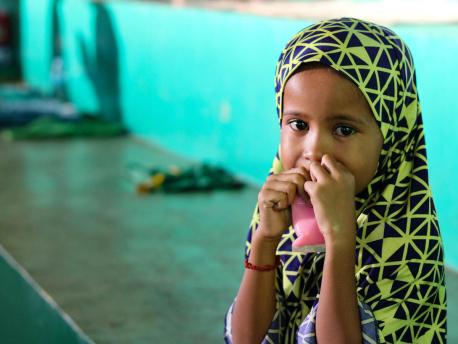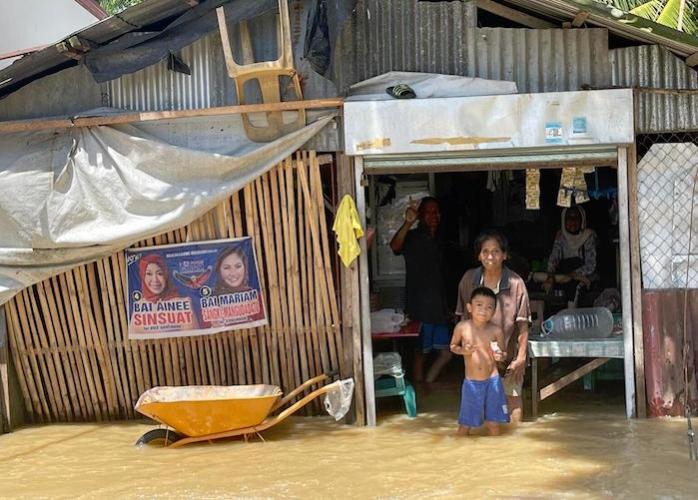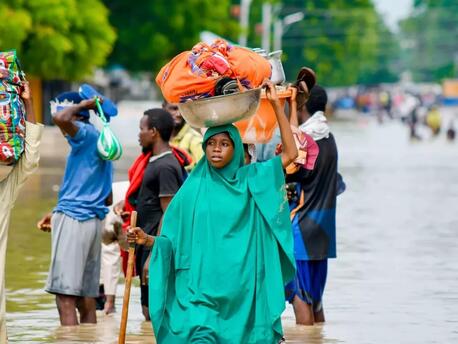
Tropical Storm Nalgae Batters Philippines
UNICEF and partners are conducting rapid needs assessment to aid children affected by the latest of over 20 storms this season.
UNICEF and partners are on the ground rapidly assessing the needs of children and families caught in the path of Tropical Storm Nalgae, which swept through the Philippines on Oct. 29, causing flooding and landslides. More than 100 people have died and at least 863,000 have been displaced across several regions. Over 3 million people live in the area affected by the storm.
Nalgae, called Tropical Storm Paeng locally, is the latest of over 20 storms that have hit the Philippines during the 2022 Pacific Typhoon season.

Flooding in the village of Barangay, in Tuka, Mamasapano, Maguindanao province, southern Philippines. Photo taken by Sitti Quin, Child Protection Officer, UNICEF Philippines, during a rapid needs assessment mission conducted by UNICEF with government and humanitarian partners. © UNICEF/UN0726583/
The vast storm system "made five landfalls in total and brought a huge rain band that stretched over the Philippines entirely and triggered huge flash floods and landslides, devastating communities," Niko Weiland, Chief of Communications for UNICEF Philippines told the BBC. "The residents, they were used to flooding in these areas — for example threats from tsunamis or something similar — but they were not prepared for the rush of water that came down from the mountains.”
Flash floods and landslides put children at risk
UNICEF is deeply concerned for children and families at risk from the storm and has reaffirmed its readiness to provide support to a government-led response.
In the video below, UNICEF Education Officer Rosa May de Guzman Maitem reports on the situation in Barangay Kusiong, Datu Odin Sinsuat, Maguindanao province, where massive landslides and flooding have swept away nearly 200 homes and displaced thousands of residents, including children.
UNICEF teams are on the ground assessing the impact of Severe Tropical Storm #PaengPH (#Nalgae) and needs of affected communities. Heavy rainfall, flooding and landslides destroyed homes and displaced children and families in Barangay Kusiong, Datu Odin Sinsuat, #Maguindanao. pic.twitter.com/uNdrrS05sM
— UNICEF Philippines (@unicefphils) October 30, 2022
“The rights of children are under threat with each typhoon that inundates their communities," UNICEF Representative Oyunsaikhan Dendevnorov said. "Children are the least responsible for extreme weather events, and yet they are the ones being displaced, in mental distress and cut off from schools and hospitals. Communities in the Philippines are simply not safe enough."
UNICEF has prepositioned emergency supplies for families to respond to affected people’s needs for safe drinking water, sanitation, hygiene, medical supplies, nutrition, education and child protection.
HOW TO HELP
There are many ways to make a difference
War, famine, poverty, natural disasters — threats to the world's children keep coming. But UNICEF won't stop working to keep children healthy and safe.
UNICEF works in over 190 countries and territories — more places than any other children's organization. UNICEF has the world's largest humanitarian warehouse and, when disaster strikes, can get supplies almost anywhere within 72 hours. Constantly innovating, always advocating for a better world for children, UNICEF works to ensure that every child can grow up healthy, educated, protected and respected.
Would you like to help give all children the opportunity to reach their full potential? There are many ways to get involved.




